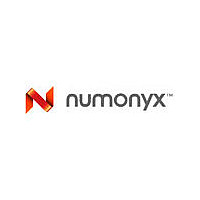rc28f320j3d75d Numonyx, rc28f320j3d75d Datasheet - Page 32

rc28f320j3d75d
Manufacturer Part Number
rc28f320j3d75d
Description
Manufacturer
Numonyx
Datasheet
1.RC28F320J3D75D.pdf
(68 pages)
8.1
8.1.1
8.1.1.1
Datasheet
32
Bus Reads
Reading from flash memory outputs stored information to the processor or chipset, and
does not change any contents. Reading can be performed an unlimited number of
times. Besides array data, other types of data such as device information and device
status is available from the flash.
To perform a bus read operation, CEx and OE# must be asserted. CEx is the device-
select control; when active, it enables the flash memory device. OE# is the data-output
control; when active, the addressed flash memory data is driven onto the I/O bus. For
all read states, WE# and RP# must be de-asserted.
Asynchronous Page Mode Read
There are two Asynchronous Page mode configurations available on Numonyx™
Embedded Flash Memory (J3 v. D), depending on the system design requirements:
After the initial access delay, the first word out of the page buffer corresponds to the
initial address. In Four-Word Page mode, address bits A[2:1] determine which word is
output from the page buffer for a x16 bus width, and A[2:0] determine which byte is
output from the page buffer for a x8 bus width. Subsequent reads from the device
come from the page buffer. These reads are output on D[15:0] for a x16 bus width and
D[7:0] for a x8 bus width after a minimum delay as long as A[2:0] (Four-Word Page
mode) or A[3:0] (Eight-Word Page mode).
Data can be read from the page buffer multiple times, and in any order. In Four-Word
Page mode, if address bits A[MAX:3] (A[MAX:4] for Eight-Word Page Mode) change at
any time, or if CE# is toggled, the device will sense and load new data into the page
buffer. Asynchronous Page mode is the default read mode on power-up or reset.
To perform a Page mode read after any other operation, the Read Array command must
be issued to read from the flash array. Asynchronous Page mode reads are permitted in
all blocks and are used to access register information. During register access, only one
word is loaded into the page buffer.
Enhanced Configuration Register (ECR)
The Enhanced Configuration Register (ECR) is a volatile storage register that when
addressed by the Set Enhanced Configuration Register command can select between
Four-Word Page mode and Eight-Word Page mode. The ECR is volatile; all bits will be
reset to default values when RP# is deasserted or power is removed from the device.
To modify ECR settings, use the Set Enhanced Configuration Register command. The
Set Enhanced Configuration Register command is written along with the configuration
register value, which is placed on the lower 16 bits of the address bus A[15:0]. This is
followed by a second write that confirms the operation and again presents the
Enhanced Configuration Register data on the address bus. After executing this
command, the device returns to Read Array mode.
The ECR is shown in
Table
• Four-Word Page mode: This is the default mode on power-up or reset. Array data
• Eight-Word Page mode: Array data can be sensed up to eight words (16 Bytes) at a
can be sensed up to four words (8 Bytes) at a time.
time. This mode must be enabled on power-up or reset by using the command
sequence described in
bits A[3:1] determine which word is output during a read operation, and A[3:0]
determine which byte is output for a x8 bus width.
17.
Table
Table 18, “Command Bus Operations” on page
16. 8-word page mode Command Bus-Cycle is captured in
Numonyx™ Embedded Flash Memory (J3 v. D)
35. Address
November 2007
308551-05











